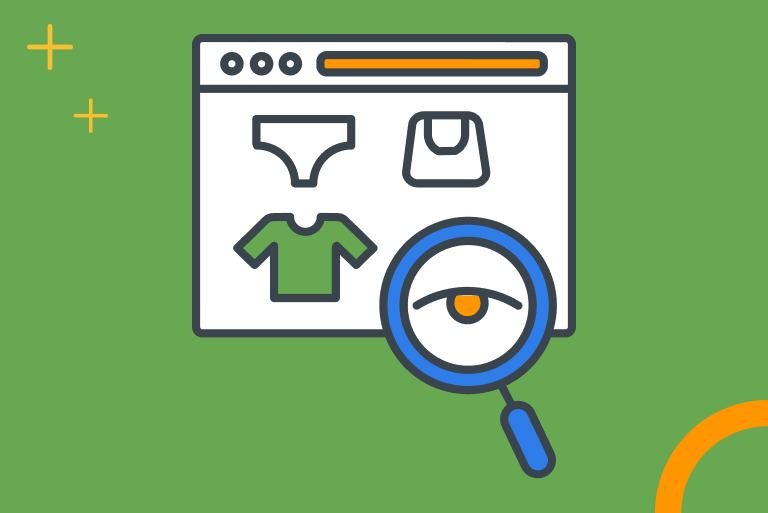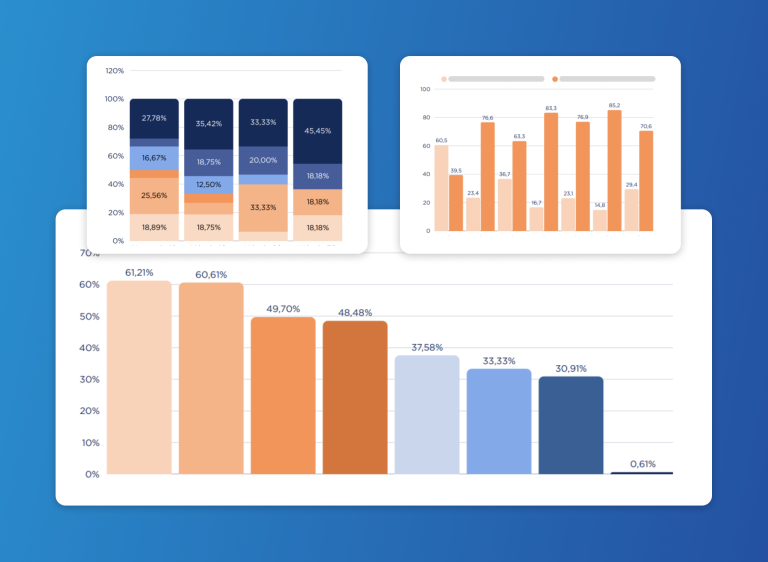Cross-selling is a proven effective strategy to increase repeat purchase rate and boost profitability on eCommerce sites. In addition, it helps improve the client’s shopping experience. If you are interested in benefiting from it, in this post we’ll go through a few cross-selling strategies that you can activate now using Connectif. We will also explain some of the risks of a failed cross-selling strategy.
How does cross-selling work?
First, let’s find out what cross-selling is about, its benefits and why you should use it on your eCommerce platform.
What is it
Cross-selling is a marketing tactic focused on getting your client to add complementary products or services to a completed/potential purchase. The goal is to increase the overall sales value by including additional products that complement the purchasing experience and increase customer’s satisfaction. Ultimately, it’s a win-win for both parties.
Benefits of cross-selling
If applied correctly, cross-selling can be an excellent tool for:
- Getting extra income in the short and long run.
- Building a loyal clientele.
- Improving the purchasing experience.
Cross-selling and upselling
Although they usually go hand in hand, cross-selling and upselling are not exactly the same thing. Nevertheless, both strategies share the same starting point: raising the sales value or average ticket.
Where does the difference lie? It’s simple: cross-selling strategies offer complementary product recommendations, while upselling tactics are focused on suggesting similar products from a higher, more expensive range.
Imagine that a client is purchasing a basic selfie stick. If the site recommends a higher-end model to the customer that includes wifi and a remote to snap the photo, that would be upselling. However, suggesting the addition of a selfie stick or a phone case to their cart would be cross-selling.
If you still have questions about the difference between cross-selling and upselling, take a look at this blog post with strategies to increase the average order value at checkout. And while you’re at it, take notes about how you can make the most out of this customer journey hot point.
Tips to keep and reactivate customers through cross-selling
Cross-selling requires a certain flair and expertise to be done. It must be subtle. Otherwise, you could end up discouraging or annoying your customers. Let’s take a look at some tips to do cross-selling “right”.
- Offer something relevant
When applying any cross-selling strategy, make sure that what you’re offering is valuable and relevant for the customer. Stay away from friction or doubts.
- Segment as much as possible
If you can group your clients according to their behavioral patterns, their profile or the channel they initially used to reach you, you’ll be on the right direction to deploy a correct cross-selling strategy.
Combining smart segmentation with AI is tremendously helpful to identify and predict your users’ interests and purchase decisions (whether they are anonymous or identified customers), as it allows you to personalize product recommendations as much as possible.
The main idea consists of grouping your visitors by tracking the pages they browse through and the items they check (their behavior) in order to understand their interests and goals better. Then you’ll be able to offer real-time product recommendations and stand out at the right moment.
- Choose the perfect moment
Even the most attractive offer can fail if you present it at the wrong time. That’s why tracking technologies are essential, as they enable eCommerce sites to track their customers’ digital footprint in order to identify the best contact opportunities. This will allow you to contact them in real time and to personalize your messages to the max.
It’s important to map your clients’ customer journey not only to identify these contact opportunities, but also to ensure constant interaction and to activate an effective cross-selling strategy.
- Suggest complementary products, not essential ones
Offering complementary items instead of essential products improves customer experience. Cross-selling strategies won’t work if the client gets annoyed because they cannot fully use the original product without its accessories. The items shown as complementary should never be compulsory. They should be delicately introduced to the client as added value. In short, you need to understand and manage the client’s emotions and stray away from demanding attitudes, as they always create resistance (even if they’re subtle).
The risks of a failed cross-selling strategy
Be mindful of your cross-selling strategy tactics. If applied poorly, they can come with certain risks:
- The client’s attention might be diluted.
- If recommendations are not personalized in an optimal way, they might annoy the customer and be invasive, obstructing the purchase in new ways.
- If recommendations are displayed at the wrong moment (too late after a purchase or too soon, while the client is considering their options), the browsing experience could be hindered.
The importance of personalized recommendations
Personalized recommendations are at the heart of any cross-selling strategy. The more data granularity you get from your clients, the bigger your knowledge will be about them, which will ultimately result in better sales results.
Remember that cross-selling strategies aim to increase value for the customer, as you’re promoting products to complement items that the client already owns or is willing to purchase. That’s why personalization is crucial.
Success stories
As you can see, cross-selling strategies have a lot of potential. Now it’s time to apply them! The following workflows are perfect to start off your cross-selling journey, as they’re easily actionable and highly effective.
Cross-selling on the homepage:
Workflow goal:
To effortlessly apply a cross-selling strategy by displaying inline product recommendations at your homepage that are connected to the latest items purchased by the client. The goal is to make it easier for your customers to buy complementary products.
Level:
Beginner
How it works:
When a client browses your homepage, this workflow checks their history of orders. Then it retrieves the products from their latest shopping cart. Next, our recommendations engine is activated to display personalized web content to the client that includes items complementary to previously-purchased products.
How to use this workflow on your Connectif account:
- Log in to your Connectif account.
- Go to Workflows (left sidebar).
- Click on “Create new workflow”.
- Go to “Create using template”.
- Type the workflow’s name on the search bar.
After-purchase add-ons:
Workflow goal:
To reactivate dormant customers that haven’t made a purchase for a while by sending them an email with complementary products.
Level:
Intermediate
How it works:
When a purchase is registered, the system schedules a 14-day wait in order to detect future orders. If the client doesn’t buy again during that period, this workflow retrieves the latest items purchased by the client and complementary products (if applicable) are assigned. Then, an email with personalized recommendations is sent to the customer to encourage them to shop again.
How to use this workflow on your Connectif account:
- Log in to your Connectif account.
- Go to Workflows (left sidebar).
- Click on “Create new workflow”.
- Go to “Create using template”.
- Type the workflow’s name on the search bar.
Final Thoughts
A well-designed and properly executed cross-selling strategy not only boosts revenue, but also optimizes costs, as it is much more convenient and profitable to encourage a single client to buy several items than getting the attention of multiple leads.
Using cross-selling also makes building loyalty easier. The more products a customer buys on a specific e-shop, the tighter the bond becomes. In addition, the e-Commerce site will get to know their interests and preferences better, which will be very helpful to personalize future purchasing experiences.
Having said that, hyper-personalization is key when it’s time to cross-sell. If you want to maximize your connection between the client’s needs and the complementary items you display, it is crucial to use the appropriate tracking technology to deepen customer research. The right digital footprint tracking tool will collect all the big data available and smartly apply it to your marketing strategy using machine learning features.






